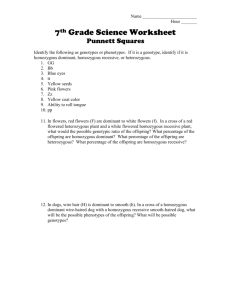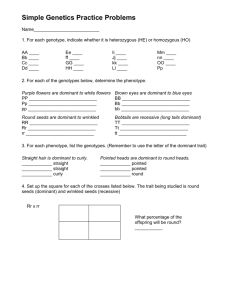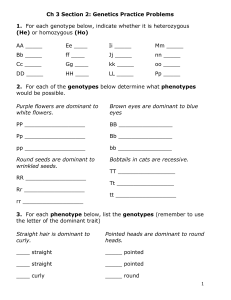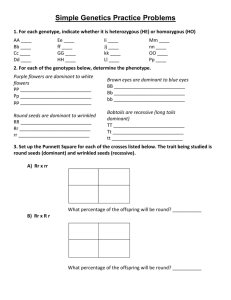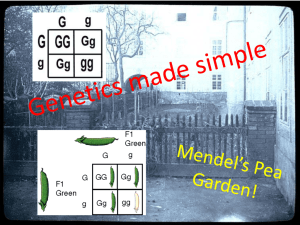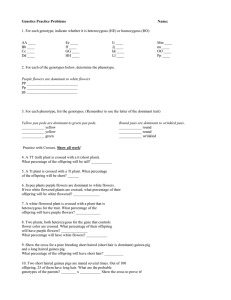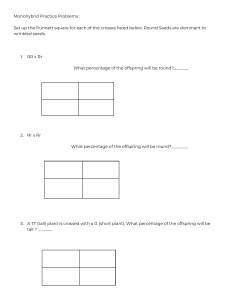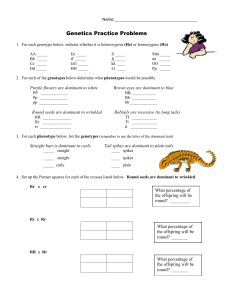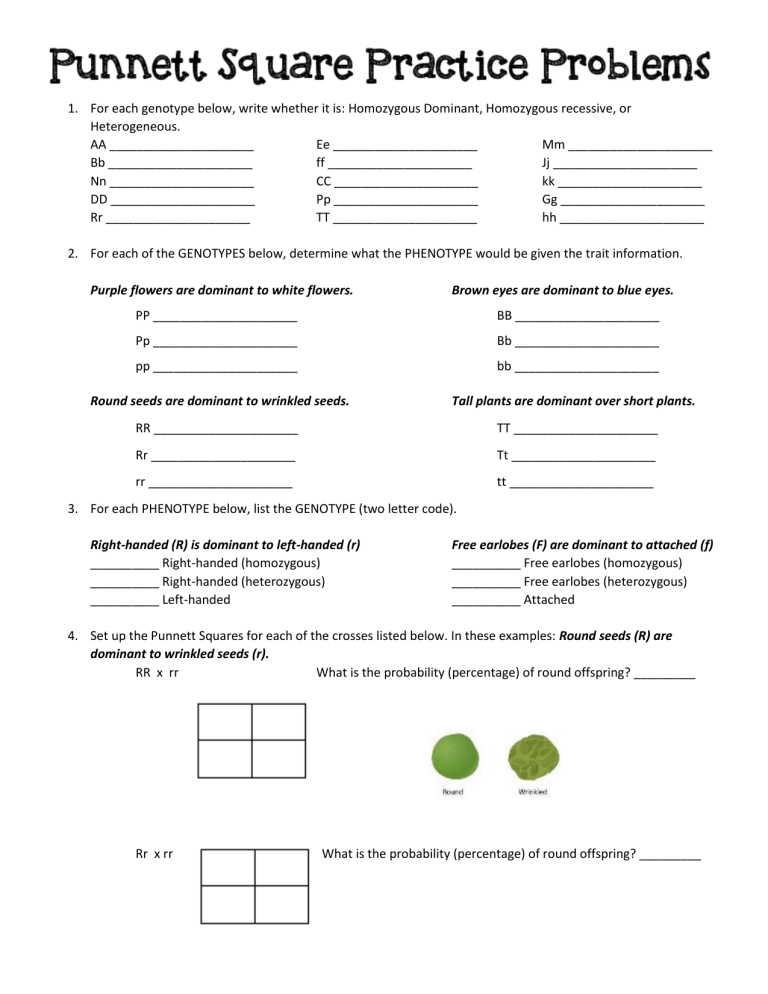
1. For each genotype below, write whether it is: Homozygous Dominant, Homozygous recessive, or Heterogeneous. AA _____________________ Ee _____________________ Mm _____________________ Bb _____________________ ff _____________________ Jj _____________________ Nn _____________________ CC _____________________ kk _____________________ DD _____________________ Pp _____________________ Gg _____________________ Rr _____________________ TT _____________________ hh _____________________ 2. For each of the GENOTYPES below, determine what the PHENOTYPE would be given the trait information. Purple flowers are dominant to white flowers. Brown eyes are dominant to blue eyes. PP _____________________ BB _____________________ Pp _____________________ Bb _____________________ pp _____________________ bb _____________________ Round seeds are dominant to wrinkled seeds. Tall plants are dominant over short plants. RR _____________________ TT _____________________ Rr _____________________ Tt _____________________ rr _____________________ tt _____________________ 3. For each PHENOTYPE below, list the GENOTYPE (two letter code). Right-handed (R) is dominant to left-handed (r) __________ Right-handed (homozygous) __________ Right-handed (heterozygous) __________ Left-handed Free earlobes (F) are dominant to attached (f) __________ Free earlobes (homozygous) __________ Free earlobes (heterozygous) __________ Attached 4. Set up the Punnett Squares for each of the crosses listed below. In these examples: Round seeds (R) are dominant to wrinkled seeds (r). RR x rr What is the probability (percentage) of round offspring? _________ Rr x rr What is the probability (percentage) of round offspring? _________ RR x Rr What is the probability (percentage) of round offspring? _________ RR x RR What is the probability (percentage) of round offspring? _________ 5. Complete the Punnett Squares for each question below. a. A tall (TT) plant is crossed with a short (tt) plant. What percentage of the offspring will be tall? ________ b. A Tt plant is crossed with a Tt plant. What percentage of the offspring will be short? ________ c. A heterozygous round-seed plant (Rr) is crossed with a homozygous round-seed plant (RR). What percentage of the offspring will be homozygous (RR)? ___________ d. In pea plants, purple flowers (F) are dominant over white flowers (f). If two white flowers are crossed, what percentage of the offspring will be white flowers? __________ e. A white flower is crossed with a plants that is heterozygous for the trait. What percentage of the offspring will have purple flowers? ___________
